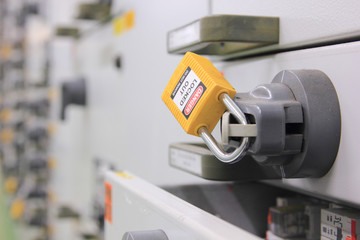- Whatsapp: +86-13396996593
- Email: [email protected]
Lockout/Tagout (LOTO) procedures play a critical safety role in the maintenance and repair of machinery and equipment. Its primary goal is to protect workers from potential injury by preventing equipment from accidentally starting up or releasing stored energy. While each step of the LOTO procedure is critical, the final step is especially critical because it ensures the safety and integrity of the entire process. The following is a detailed explanation of the final step of the LOTO program.
In industrial and manufacturing environments, safety is always a top priority. The maintenance and repair of machines and equipment involves a variety of potential hazards, including mechanical, chemical and electrical risks. In order to prevent these risks, it is vital to implement a Lockout Tagout (LOTO) procedure, which consists of a series of steps to ensure that machines and equipment are completely shut down and in a safe condition during maintenance.
This article will explain in detail the final step of the LOTO procedure: verification and validation. This step not only verifies all the previous steps, but also ensures that the machine or equipment is secure before resuming operation.

Source: Adobe Stock
The LOTO procedure consists of the following main steps:
Preparation: Before starting any operation, employees should be aware of the energy type and potential hazards of the equipment.
Notify: Inform all concerned that the equipment will be subjected to a lockout/tagout operation.
Shut Down Equipment: Shut down the equipment following normal shutdown procedures.
Isolate Energy: Isolate all sources of energy from the equipment using appropriate methods (e.g., closing valves, disconnecting power).
Apply lockout devices and tags: Apply lockout devices to all energy isolation points and hang warning tags with maintenance personnel name, date, and operation.
Release Stored Energy: Ensure that all stored energy (e.g., pressure, heat, etc.) within the equipment has been released or immobilized.
Verify: Double-check all energy isolation points of the equipment to confirm that it is completely safe. Verify isolation by activating the device’s control switches to ensure that it cannot be activated.
Recovery steps include: ensuring that all tools have been removed, the equipment is unobstructed, all personnel are evacuated, informing the appropriate personnel to unlock/tag the equipment, removing the lockout device and tags, and finally, reconnecting the energy source and testing the equipment to ensure that it is functioning properly.

Source: Adobe Stock
Verification and validation are the final steps in the LOTO procedure, aiming to ensure the equipment is safe before resuming operation. This step includes the following key actions:
The verification and validation step is crucial because it directly impacts the safety of workers and equipment. If this step is not properly executed, it could lead to unexpected start-up or energy release, resulting in severe injuries or equipment damage. Here are the key reasons why verification and validation are important:
Only authorized personnel can remove the locks and tags. Before removal, ensure all personnel have exited the danger zone and all parts of the equipment are in a safe state. Steps for removal include:
After removing the locks and tags, inform all affected personnel that the equipment is about to resume operation. This step includes:
Restoring the equipment’s energy supply is a critical step and must be done in the correct sequence to prevent unexpected start-up. Specific steps include:
Before the equipment is fully operational, conduct a final inspection and test to ensure all systems and components are working correctly and there are no safety hazards. Specific steps include:
To ensure effective implementation of the verification and validation step, consider the following best practices:
Q1: Why is LOTO important?
LOTO is crucial for preventing accidents and injuries that can occur if machines start unexpectedly or release stored energy during maintenance. It ensures the safety of workers by controlling hazardous energy sources.
Q2: What types of energy sources require LOTO procedures?
LOTO procedures are required for all types of hazardous energy sources, including electrical, mechanical, hydraulic, pneumatic, chemical, thermal, and gravitational energy.
Q3: Who is responsible for implementing LOTO procedures?
Both employers and employees have responsibilities. Employers must establish and enforce LOTO procedures, provide training, and ensure compliance. Employees must follow the procedures and use the necessary LOTO devices.
Q4: What are the differences between lockout and tagout?
Lockout involves placing a lock on the energy-isolating device to prevent it from being operated. Tagout involves attaching a tag to the device to indicate that it should not be operated. Lockout provides a physical barrier, whereas tagout serves as a warning.
Q5: What types of devices are used in LOTO procedures?
Various devices are used, including padlocks, lockout hasps, valve lockouts, circuit breaker lockouts, and tags. These devices help ensure that energy sources remain isolated.
Want To Learn More? Click Here To View Product Details!
Privacy Policy
Copyright Lockey Safety Products Co.,Ltd SUPPORT BY :JUNJ